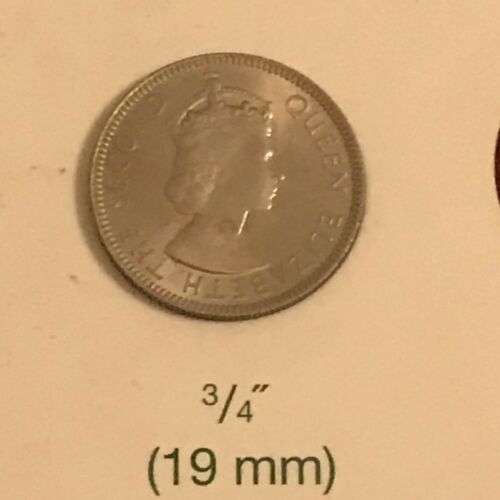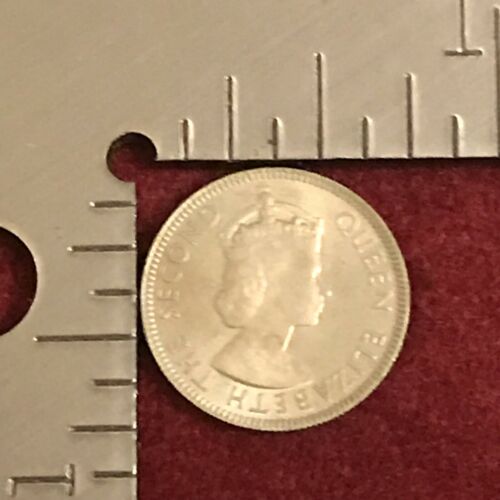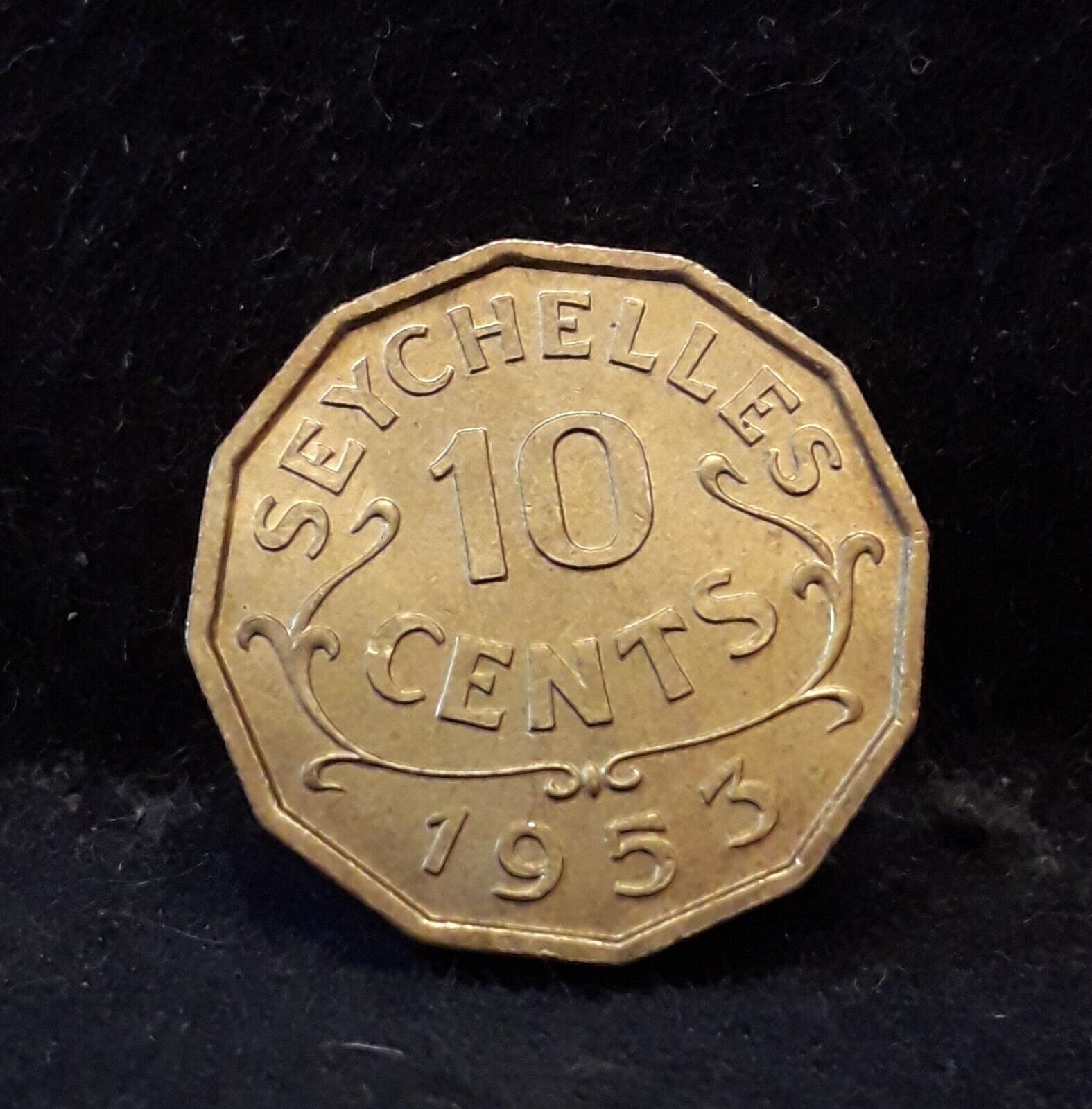-40%
Elizabeth II • 1st portrait • Seychelles 1954 Copper-nickel 25 Cents Coin 19.2mm
$ 13.2
- Description
- Size Guide
Description
Seychelles 25 Cents 1954 Coin.Features
Country Seychelles
Type Standard circulation coin
Years 1954-1974
Value 25 Cents (0.25 SCR)
Composition Copper-nickel
Weight 2.9 g
Diameter 19.2 mm
Shape Round
Orientation Medal alignment ↑↑
Demonetized yes
References KM# 11
Obverse
Effigy of queen Elizabeth II facing right
Lettering: QUEEN ELIZABETH THE SECOND
Engraver: Cecil Thomas
Reverse
Denomination centered, date below
Lettering:
SEYCHELLES
25 CENTS
1954
Engraver: George Kruger-gray
Edge
Reeded
Comments
Royal Mint
Seychelles (/seɪˈʃɛlz/ (About this soundlisten) say-SHELZ; French: [sɛʃɛl][5][6][7] or [seʃɛl][8]), officially the Republic of Seychelles (French: République des Seychelles; Creole: La Repiblik Sesel), is an archipelago country in the Indian Ocean. The capital of the 115-island country, Victoria, lies 1,500 kilometres (932 mi) east of mainland East Africa. Other nearby island countries and territories include Comoros, Mayotte (region of France), Madagascar, Réunion (region of France) and Mauritius to the south; as well as the Maldives and Chagos Archipelago to the east. With a population of roughly 94,228, it has the smallest population of any sovereign African country.[9]
Seychelles is a member of the African Union, the Southern African Development Community, the Commonwealth of Nations, and the United Nations. After proclamation of independence from the United Kingdom in 1976, Seychelles has developed from a largely agricultural society to a market-based diversified economy, with agriculture being supplanted by rapidly rising service and public sectors as well as tourism. From 1976 until 2015, nominal GDP output has increased nearly sevenfold and the purchasing power parity nearly sixteenfold. In late 2010s, the President Danny Faure and the National Assembly presented plans to encourage foreign investment in order to further upgrade these sectors.
Today, Seychelles boasts the highest nominal per capita GDP in Africa, excluding the French regions. It is one of only a handful of countries in Africa with a high Human Development Index. It is also the only country in Africa which is classed as a high-income economy by the World Bank. Despite the country's newfound economic prosperity, poverty remains widespread and one finds a high level of economic inequality, one of the highest in the world, and unequal wealth distribution among the populace, the upper and ruling class commanding a vast proportion of the country's wealth
Britain eventually assumed full control upon the surrender of Mauritius in 1810, formalised in 1814 at the Treaty of Paris. Seychelles became a crown colony separate from Mauritius in 1903. Elections were held in 1966 and 1970.
Independence
Independence was granted in 1976 as a republic within the Commonwealth.[13] In the 1970s Seychelles was "the place to be seen, a playground for film stars and the international jet set".[14] In 1977, a coup d'état by France Albert René ousted the first president of the republic, James Mancham.[15] René discouraged over-dependence on tourism and declared that he wanted "to keep the Seychelles for the Seychellois".[14]
The 1979 constitution declared a socialist one-party state, which lasted until 1991.
In the 1980s there were a series of coup attempts against President René, some of which were supported by South Africa. In 1981, Mike Hoare led a team of 43 South African mercenaries masquerading as holidaying rugby players in the 1981 Seychelles coup d'état attempt.[14] There was a gun battle at the airport, and most of the mercenaries later escaped in a hijacked Air India plane.[14] The leader of this hijacking was German mercenary D. Clodo, a former member of the Rhodesian SAS.[16] Clodo later stood trial in South Africa (where he was acquitted) as well as in his home country Germany for air piracy.[17]
In 1986, an attempted coup led by the Seychelles Minister of Defence, Ogilvy Berlouis, caused President René to request assistance from India. In Operation Flowers are Blooming, the Indian naval vessel INS Vindhyagiri arrived in Port Victoria to help avert the coup.[18]
The first draft of a new constitution failed to receive the requisite 60% of voters in 1992, but an amended version was approved in 1993.
In January 2013, Seychelles declared a state of emergency; the tropical cyclone Felleng caused torrential rain, and flooding and landslides destroyed hundreds of houses.
Shipped with USPS First Class Package.




















